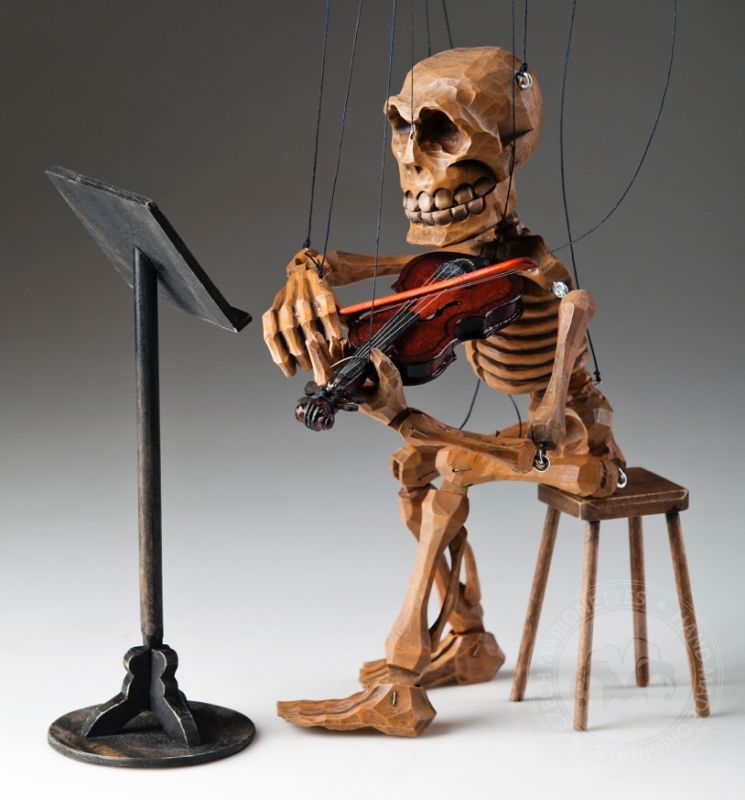
Two summers ago I developed severe pain in my left trapezius (specifically, the back of my neck extending toward the shoulders and across the upper back) while playing two Mozart operas back-to-back for an opera festival. This went on for a week straight with no days off, and was followed by a Wagner opera a few weeks later. The pain lingered around for hours after playing, and my own default “quick-fix” methods to relieve the pain were no longer working. It was time to take action beyond my instinctual behaviors (ie – limiting physical practice time, making sure I am sitting “correctly,” etc). Thankfully I was able to find an excellent physical therapist at Motion Sports PT in midtown east in Manhattan, and I didn’t have to take any “extended break” from playing the violin, which wouldn’t have helped anyway.
Last week, I had the privilege to attend Juilliard’s virtually-held Starling-Delay Symposium. One of the best events for me was focused around longevity and injury-prevention. Much of what I learned in physical therapy was echoed and explained in greater detail at Pamela Frank and Howard Nelson’s workshop titled Don’t Let This Happen To You. After overcoming a debilitating playing injury, Pamela Frank spent over a year retraining her posture and fundamental movement patterns both during violin-playing and other everyday activities (ie – sitting, standing, sleeping, etc). In this workshop we focused on how to keep a healthy body alignment and how to be more efficient in the practice room.
Building awareness & training body alignment
It can be very difficult to be aware of deeply-ingrained habits during violin-playing, such as rolling shoulders forward, clamping down on the chin-rest for dear life, or leaning the body down and to the left. Many of you reading probably already know the power of video-recording yourself playing. But have you ever watched your videos on mute? As musicians, when we listen to ourselves on video, most of the attention goes directly to the sound and the tendency is to ignore what we do physically (unless it’s something super obvious, like the bow not being straight). By muting the video, we can instantly get better at analyzing our overall posture.
The most common culprits causing neck and shoulder pain are rolling of the shoulders forward and hunching the head forward and to the left. Howard Nelson emphasized the importance of paying attention to how the head is aligned throughout the day, with the goal of getting into the habit of keeping it in neutral position as often as possible. He encouraged us to randomly video-record ourselves doing everyday activities, such as sitting at the computer, eating, and even sleeping:
“You are what you train. The body will adapt to whatever you do.”
Adapt the environment to your body
The next course of action is to make the environment adapt to your body, and not the other way around. For violinists and violists, it’s important for the setup of the instrument (a proper chinrest and/or shoulder rest) to work well with your body and allow for the head to do minimal work when it comes to holding the instrument in place. With the exception of downward shifts, it’s potentially possible to play just about anything with a free neck, in neutral position, not leaning on the chinrest at all. We were encouraged to practice a scale, or even just open strings with the head in completely neutral position, facing forward the whole time.
Other ways the environment can adapt to the body is proper height of the music stand and strategic use of chairs in orchestral and chamber music settings.
Key exercises
To briefly summarize from the workshop:
- Exercise the muscles that oppose those you normally use/overuse.
- Above all, keep a healthy trapezius – do arm raises with palms facing inward.
- Bend from the hips (and not the waist!) to keep a healthy, neutral spine. Doing squats regularly with a good form will help develop this habit.
5 Smart Practice Techniques
Here are several key strategies from Pamela Frank on practicing in a way that will save time and help prevent unnecessary strains and injuries.
- Practice technical exercises with “1000% expression” and musical intention.
- Study the score and musical phrasing first. Identify the tension and release moments in the music before practicing physically. Observe what’s in the score and then try musical ideas in practice.“Practice isn’t about woodshedding. It’s about trying all the options.”
- Never repeat something without change – this way every repetition has very specific intention.
- Restrict practice time. Make a short list and prioritize. It will make you more efficient and conserve energy.
- Practice performing by simulating the performance environment. Learn to play with your nerves, and not against them.

Darlene Rivest says:
This is such an excellent summary of that session. I love this breakdown and will use it as a reference to keep working toward pain free playing. The most powerful takeaway for me were the arm raises. I was suffering from left shoulder pain and just that motion released the pain. I’m now making that motion part of my regular practice. Thank you so much, Inna!!
Inna Langerman says:
It’s so awesome that the arm raises are helping you, Darlene!! I remember my first session in physical therapy, he asked me to raise my arms and literally measured by degrees how far off they were – I couldn’t bring them all the way overhead. Back exercises/rows helped very much!
Monica Kobelt says:
Thank you so much for this post! I have had a similar shoulder injury which I need to continue to stay vigilent with exercises and new ways of practice techniques. This has been most helpful!
Inna Langerman says:
I’m so glad this was helpful, Monica! I also need to remember to do the exercises before and after practice – and not wait until the first signal from the body.
Clara Lindner says:
Thank you so much for this article Inna. You have so many concise and helpful suggestions. A pt suggested “wall angels” which help me. I find sitting in an orchestra setting, especially a pit or cramped stage, to be so physically difficult because often we don’t have enough room to adjust.
I also do stretches every morning and stretch for a few minutes with my students at the beginning of lessons. I think I should also stretch with them at the end of lessons, but I always run out of time! Thank you !!
Inna Langerman says:
That’s great, Clara! I should really start stretching with my students…Also, I don’t take credit for these suggestions – this is really just a summary from a workshop. Wall Angels are great – they really mobilize the shoulder blades!
Stewarrt says:
Thank you for an excellent article.
Have a look at Chinese Iron Balls.
They come as a pair each with its own ringing sound one yin and the other yang.
The balls are placed in your hand and rotated in either a clockwise direction or anti clockwise direction.
This exercise will keep all the points on your hand in constant motion, with the muscles in your hand and forearm contracting and relaxing harmoniously.
Various sizes are available and beginners should select balls of a smaller size then graduate as required.
The use of these balls have enabled me to loosen my hands almost immediately if I have worked too hard by not relaxing with my violin playing. To be used with either or both hands as necessary. They DO work and they are very inexpensive and they have a relaxing sound when rotating ! Try them you might save on doctor visits for minor ailments but use with some caution.